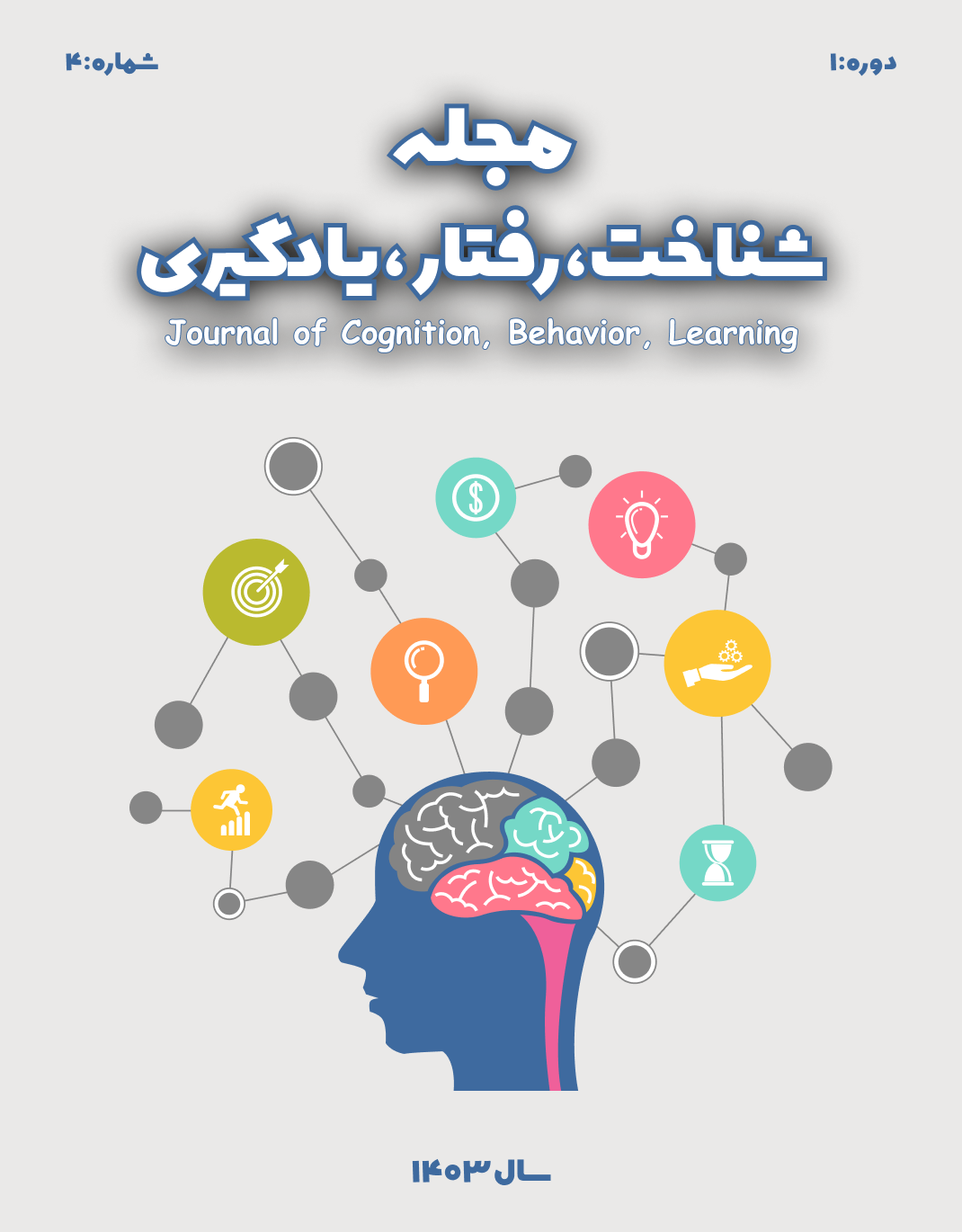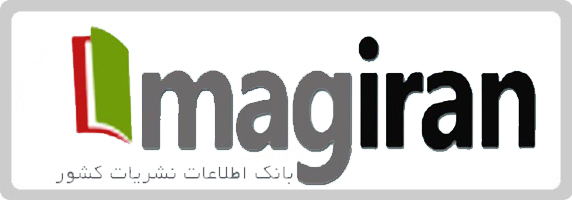طراحی و سنجش روایی محتوایی برنامه توانمندسازی حساسیت حواس (مبتنی بر VAKT) برای کودکان تیزهوش کمپیشرفت
کلمات کلیدی:
توانمندسازی، حساسیت حواس، کودکان تیزهوش، کم¬پیشرفت.چکیده
هدف پژوهش حاضر شناسایی مؤلفهها و عناصر برنامه توانمندسازی حساسیت حواس (مبتنی بر VAKT)، تدوین برنامه و سنجش روایی محتوایی آن برای کودکان تیزهوش کمپیشرفت بود. روش پژوهش، کیفی و از نوع سنتزپژوهی بود. جامعه آماری شامل تمامی مقالات و پژوهش های مرتبط با حساسیت حواس بود. حجم نمونه تعداد ۹۲ مقاله بود که در سال های 2012 تا ۲۰۲۳ منتشر شده بودند و براساس معیارهای ورود و خروج، ابتدا ۲۷ و سپس بعد از مطالعه ی چکیده ی اسناد، کیفیت مقالات و میزان مرتبط بودن، تعداد 13 مورد به عنوان نمونه پژوهش انتخاب شد. جهت تحلیل دادهها از الگوی شش مرحله ای پتیکرو و روبرتس (2006) و برای روایی محتوایی از شاخص روایی محتوایی استفاده شد. طبق یافته های پژوهش، برنامه توانمندسازی حساسیت حواس بر 6 مضمون اصلی شامل: مکانیسمهای عصبی، پروفایلهای حسی، عوامل فردی و محیطی، عوامل عاطفی و روانشناختی، بهزیستی حسی ویکپارچگی حسی استوار است. روایی محتوایی براساس شاخص روایی محتوایی 82/0 بهدست آمد که مبین روایی محتوایی قابل قبول برنامه بود. بنابراین، برنامه توانمندسازی حساسیت حواس برای کودکان تیزهوش کمپیشرفت میتواند به عنوان یک ابزار مؤثر در بهبود حساسیت حواس و ارتقای عملکرد حسی این افراد مورد استفاده قرار گیرد و پتانسیل بالایی برای کاربرد در مداخلات آموزشی و درمانی دارد و میتواند به عنوان پایهای برای پژوهشهای آینده در این حوزه باشد.
دانلودها
مراجع
Acevedo, B. P. (2020). The basics of sensory processing sensitivity. In The highly sensitive brain (pp. 1-15). Elsevier.
Aghajani, S., & Rahbari Ghazani, N. (2021). The role of sensory processing sensitivity and emotional processing in predicting psychological disturbances in drug-dependent individuals. Journal of Research in Psychopathology, 2(5), 1-7.
Al-Harasis, D. H., Jabi, W., & Sharmin, T. (2025). Developing a taxonomy for sensory-informed architectural design qualities in autism. Building Research & Information, 1-20.
Alarcón-Espinoza, M., Sanduvete-Chaves, S., Anguera, M. T., Samper Garcia, P., & Chacón-Moscoso, S. (2022). Emotional self-regulation in everyday life: A systematic review. Frontiers in psychology, 13, 884756.
Alsuwailimi, M. S. (2024). Identification of gifted students in different global contexts: literature review. Journal of Special Education & Rehabilitation, 2314-8608.
Aron, E. N. (2020). Clinical assessment of sensory processing sensitivity. In The highly sensitive brain (pp. 135-164). Elsevier.
Aron, E. N., Aron, A., & Jagiellowicz, J. (2012). Sensory processing sensitivity: A review in the light of the evolution of biological responsivity. Personality and Social Psychology Review, 16(3), 262-282.
Bararpoor, M., Vakili, S., & Keshavarz Afshar, H. (2022). Effectiveness of Fernald's multidisciplinary teaching method on enhancing the performance of reading components of Dyslexic students. Empowering Exceptional Children, 13(2), 10-11.
Bas, S., Kaandorp, M., de Kleijn, Z. P., Braaksma, W. J., Bakx, A. W., & Greven, C. U. (2021). Experiences of adults high in the personality trait sensory processing sensitivity: A qualitative study. Journal of clinical medicine, 10(21), 4912.
Boterberg, S., & Warreyn, P. (2016). Making sense of it all: The impact of sensory processing sensitivity on daily functioning of children. Personality and individual differences, 92, 80-86.
Buchtova, M., Malinakova, K., van Dijk, J. P., Husek, V., & Tavel, P. (2024). Sensory processing sensitivity is associated with religiosity and spirituality. Humanities and Social Sciences Communications, 11(1), 1-8.
Chellappa, S. L. (2025). Addressing multiple neurodivergent identities in clinical and research settings. The Lancet Child & Adolescent Health, 9(1), 5-6.
Çiftçi, M. (2025). Theories of giftedness and their practical implications: orientation areas of giftedness potential in Türkiye. Journal of Child Development, Exceptionality and Education, 23-31.
Costa-Lopez, B., Ferrer-Cascales, R., Ruiz-Robledillo, N., Albaladejo-Blazquez, N., & Baryła-Matejczuk, M. (2021). Relationship between sensory processing and quality of life: A systematic review. Journal of clinical medicine, 10(17), 3961.
de Larrea-Mancera, E. S. L. (2021). Perceptual Learning: Assessment and Training Across the Mechanical Senses. University of California, Riverside.
Desmet, O. A., Pereira, N., & Peterson, J. S. (2020). Telling a tale: How underachievement develops in gifted girls. Gifted Child Quarterly, 64(2), 85-99.
Dinse, H. R., & Tegenthoff, M. (2015). Evoking plasticity through sensory stimulation: Implications for learning and rehabilitation. e-Neuroforum, 6, 11-20.
Elias, M. J., Marsili, F., Fullmer, L., Morganti, A., & Bruno, E. (2025). The social-emotional competencies of gifted children must be intentionally developed, ideally in inclusive education contexts. Gifted Education International, 41(1), 57-75.
Escelsior, A., Murri, M. B., Polena, L., Petrilli, G., Zizzi, A., Inuggi, A., Bode, J., Engel-Yeger, B., da Silva, B. P., & Gori, M. (2024). Exploring the Link Between Sensory Processing and Psychopathology in a Community Sample of Young Adults: Bayesian Network Analyses. International journal of mental health and addiction, 1-13.
Finnigan, K. A. (2024). Sensory responsive environments: A qualitative study on perceived relationships between outdoor built environments and sensory sensitivities. Land, 13(5), 636.
Ganesan, G. K., Norashiken, O., & Abdullah, U. (2023). Assessing the Eye Gaze Pattern While Reading with VAKT Sensory for Autism Spectrum Disorder (ASD) Using Eye-Tracking Technology. Human Factors and Ergonomics Malaysia Biennial Conference,
Gharebaghi, S., MOHAMADJANI, Z., SOORTJI, H., & Biglarian, A. (2011). Effectiveness of sensory stimulation by weighted vest on motor skills and attention of 6-10 years old children with learning disorders.
Gopal, A., & Raghavan, J. (2018). Design interventions for Sensory comfort of Autistic children. Autism-Open Access, 8(01), 1-8.
Gräper, P. J., Hartvigsen, J., Scafoglieri, A., Clark, J. R., van Trijffel, E., & Hallegraeff, J. M. (2025). Sensory profiles and their role in the persistence of central sensitization symptoms in low back pain. A prospective cohort study. Physiotherapy Theory and Practice, 41(2), 317-326.
Greven, C. U., Lionetti, F., Booth, C., Aron, E. N., Fox, E., Schendan, H. E., Pluess, M., Bruining, H., Acevedo, B., & Bijttebier, P. (2019). Sensory processing sensitivity in the context of environmental sensitivity: A critical review and development of research agenda. Neuroscience & Biobehavioral Reviews, 98, 287-305.
Hackman, D. A., Robert, S. A., Grübel, J., Weibel, R. P., Anagnostou, E., Hölscher, C., & Schinazi, V. R. (2019). Neighborhood environments influence emotion and physiological reactivity. Scientific reports, 9(1), 9498.
Hirai, M., Ikeda, A., Kato, T., Ikeda, T., Asada, K., Hakuno, Y., Matsushima, K., Awaya, T., Okazaki, S., & Kato, T. (2024). Comparison of the sensory profile among autistic individuals and individuals with Williams syndrome. Journal of Autism and Developmental Disorders, 1-8.
Homberg, J. R., Schubert, D., Asan, E., & Aron, E. N. (2016). Sensory processing sensitivity and serotonin gene variance: Insights into mechanisms shaping environmental sensitivity. Neuroscience & Biobehavioral Reviews, 71, 472-483.
Hosseinkhanzadeh, A. A., Latif, M. and taher, M. (2018). Comparison of the Effectiveness Computer-Assisted Working memory rehabilitation and Multi-Sensory Method on Improvement Executive Functions of Students with Dyslexia. Psychology of Exceptional Individuals, 8(29), 35-60.
Hu, Y. (2023). Sensory Processing Sensitivity and Children Development in the Context of Environmental Sensitivity. Journal of Education Humanities and Social Sciences. https://doi.org/10.54097/ehss.v8i.4649
Ivarsson, L. (2023). Principals’ perceptions of gifted students and their education. Social Sciences & Humanities Open, 7(1), 100400.
Jackson, R. L., & Jung, J. Y. (2022). The identification of gifted underachievement: Validity evidence for the commonly used methods. British Journal of Educational Psychology, 92(3), 1133-1159.
Javed, S., Muniandy, M., Lee, C. K., & Husni, H. (2024). Enhancing teaching and learning for pupils with dyslexia: A comprehensive review of technological and non-technological interventions. Education and Information Technologies, 29(8), 9607-9643.
Johnsen, S. K. (2021). Definitions, models, and characteristics of gifted students. In Identifying gifted students (pp. 1-32). Routledge.
Lamanna, J. (2022). Reversing and preventing academic underachievement in gifted students viewed through the lens of lived experience University of Wollongong].
Lan, J. (2024). The Literature Review of Sensory Processing Sensitivity. Lecture Notes in Education Psychology and Public Media, 63, 138-144. https://doi.org/ https://doi.org/10.54254/2753-7048/63/20240956
Li, X., Li, Z., Jiang, J., & Yan, N. (2023). Children's sensory processing sensitivity and prosocial behaviors: Testing the differential susceptibility theory. Journal of Experimental Psychology: General, 152(5), 1334.
Lv, X., Zhang, C., & Li, C. (2024). Beyond image attributes: A new approach to destination positioning based on sensory preference. Tourism Management, 100, 104819. https://doi.org/10.1016/j.tourman.2023.104819
Lyons, K. M. (2023). A Toolkit for Teacher Recognition of Underachieving Gifted Students: An Intervention Study with Victorian Teachers Victoria University].
Mac, A., Kim, M.-K., & Sevak, R. J. (2024). A review of the impact of sensory processing sensitivity on mental health in university students. Mental Health Clinician, 14(4), 247-252.
MacLennan, K., O’Brien, S., & Tavassoli, T. (2022). In our own words: The complex sensory experiences of autistic adults. Journal of Autism and Developmental Disorders, 52(7), 3061-3075.
Malinakova, K., Novak, L., Trnka, R., & Tavel, P. (2021). Sensory processing sensitivity questionnaire: a psychometric evaluation and associations with experiencing the COVID-19 pandemic. International journal of environmental research and public health, 18(24), 12962.
Marhenke, R., Acevedo, B., Sachse, P., & Martini, M. (2023). Individual differences in sensory processing sensitivity amplify effects of post-learning activity for better and for worse. Scientific reports, 13(1), 4451.
Nordin, M. N., Ismail, S. Z., Bahadin, S. A., Yusuf, R. A., Salleh, M. N. M., Anuar, F. N., & Krishnan, V. (2024). Multisensory Method in the Study of Language Skills of Students with Special Educational Needswith Visual Impairment: A Preliminary Concept. International Journal of Communication Networks and Information Security, 16(3), 109-112.
Özpek, T., & Kandemir, F. (2024). Relationship between Sensory Processing Sensitivity and Personality Traits. Psikiyatride Güncel Yaklaşımlar, 16(3), 532-542.
Pandey, D., & Mukherjee, S. (2024). Can Multi-Sensory Affordance Mitigate the Shortcomings of Metaverse offerings? Journal of Marketing Theory and Practice, 1-33.
Park, G., Nanda, U., Adams, L., Essary, J., & Hoelting, M. (2020). Creating and Testing a Sensory Well–Being Hub for Adolescents with Developmental Disabilities. Journal of Interior Design, 45(1), 13-32.
Paron, A. (2020). Design for all needs design empathy. Journal of Interior Design, 45(4), 3-9.
Patel, T., Dorff, J., & Baker, A. (2022). Development of special needs classroom prototypes to respond to the sensory needs of students with exceptionalities. Archnet-IJAR: International Journal of Architectural Research, 16(2), 339-358.
Peterka, R. J. (2018). Sensory integration for human balance control. Handbook of clinical neurology, 159, 27-42.
Petticrew, M., & Roberts, H. (2008). Systematic reviews in the social sciences: A practical guide. John Wiley & Sons.
Posar, A., & Visconti, P. (2018). Sensory abnormalities in children with autism spectrum disorder. Jornal de Pediatria, 94(4), 342-350.
Rezayi, S. a. V. k. (2021). The effectiveness of the social competence intervention program on prosocial- behaviors of gifted students with low-achieving. Social Psychology Research, 11(43), 140-123. https://doi.org/https://doi.org/10.22034/spr.2021.284293.1644
Riboldi, E. M., Capelli, E., Cantiani, C., Beretta, C., Molteni, M., & Riva, V. (2024). Differentiating early sensory profiles in toddlers at elevated likelihood of autism and association with later clinical outcome and diagnosis. Autism, 28(7), 1654-1666.
Rideaux, R., West, R. K., Rangelov, D., & Mattingley, J. B. (2023). Distinct early and late neural mechanisms regulate feature-specific sensory adaptation in the human visual system. Proceedings of the National Academy of Sciences, 120(6), e2216192120.
Şakar, S., & Tan, S. (2025). Research Topics and Trends in Gifted Education: A Structural Topic Model. Gifted Child Quarterly, 69(1), 68-84.
Samsen-Bronsveld, H. E., Bakx, A. W., Bogaerts, S., & Van der Ven, S. H. (2024). A comparison of gifted children and children with low, average, and above-average cognitive abilities in sensory processing sensitivity in the primary school context. Gifted Child Quarterly, 68(3), 189-205.
Sawtell, N. B. (2017). Neural mechanisms for predicting the sensory consequences of behavior: insights from electrosensory systems. Annual review of physiology, 79(1), 381-399.
Silverman, L. K., & Miller, N. B. (2009). A feminine perspective of giftedness. International handbook on giftedness, 99-128.
Smith, M. C. (2019). Sensory integration: Theory and practice. FA Davis.
Steenbergen-Hu, S., Olszewski-Kubilius, P., & Calvert, E. (2020). The effectiveness of current interventions to reverse the underachievement of gifted students: Findings of a meta-analysis and systematic review. Gifted Child Quarterly, 64(2), 132-165.
Voria, G., Catolino, G., & Palomba, F. (2024). Is attention all you need? toward a conceptual model for social awareness in large language models. Proceedings of the 2024 IEEE/ACM First International Conference on AI Foundation Models and Software Engineering,
Zahirah, N. H. (2024). Improving Beginning Reading Skills Using The Fernald Method at Orphanage X Gresik. Jurnal Al Karim: Jurnal Pendidikan, Psikologi dan Studi Islam, 8(2), 109-116.
دانلود
چاپ شده
ارسال
بازنگری
پذیرش
شماره
نوع مقاله
مجوز
حق نشر 2025 معصومه گلشنی جورشری (نویسنده); سعید رضایی (نویسنده مسئول); پرویز شریفی درآمدی, فاطمه نیکخو (نویسنده)

این پروژه تحت مجوز بین المللی Creative Commons Attribution-NonCommercial 4.0 می باشد.






